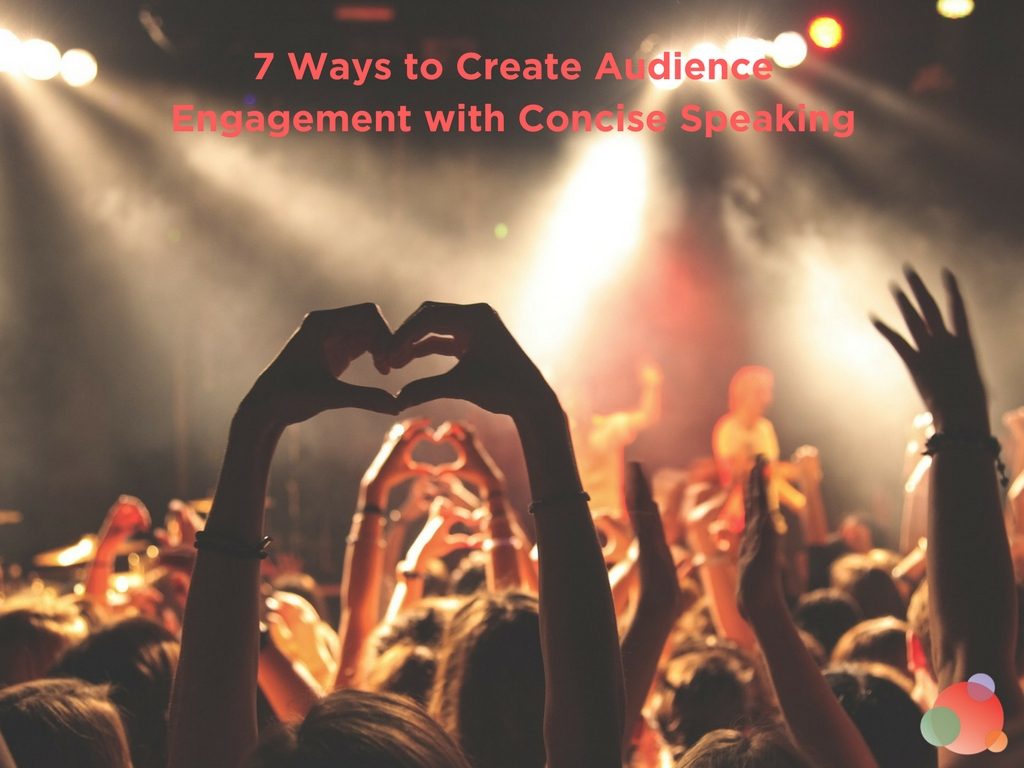You’re attending a large conference, and there are lots of speakers giving presentations.
But as the speaker drones on and on in the dark, cavernous room, you find yourself drifting away.
Time to get out the phone and check on friends, or maybe nod off for a bit and hope no one important notices, or pull out the presentation packet and begin doodling.
The speaker is either boring or has overloaded the speech with too much information, and you just cannot absorb any more.
Fixing the Problem
If you recognize yourself as that speaker, you must work on fixing this problem.
Either you need to be more engaging and enthusiastic, or you need to take a long hard look at your content to determine if your audience is experiencing “information overload.”
More than likely, the problem is you’ve simply put too much information into a single speech.
If that’s the case, then you need to figure out how you can avoid the overload.
Here are seven tips to help you fix this issue.
Stick to a Single Theme
If your speech is about how to motivate employees, then that’s all it should cover.
No need to add side topics about recruitment or hiring.
Fit Sub-points to Speech Length
Each point you are making must relate to the single theme. And the number of points should be narrowed to fit the time you have.
Trying to cram five or six points into a 45-minute speech won’t work.
Why? Because you will need to identify, explain, and give a good example (story) for each point. And this usually takes about 10 minutes per point.
So, in a 45-minute speech, you’ll need a few minutes for the introduction and conclusion, and then you’re left with time for three, maybe four points to be made.
If you try for more than this, you’ll be rushing through your presentation.
And the audience won’t have time to absorb the content before you move on to the next point. Your speech will be a “dud.”
Think it through, choose the most important points, and forget the others.
Change Up the Delivery of Each Point
You can accomplish this in many ways.
Use a story to illustrate a funny point; use another to highlight something poignant or inspirational. You need to stir emotions if you intend to keep audience engagement high.
Another way to deliver is by identifying the point and following with an illustration. And another point may begin with the illustration or story instead.
You can also vary your pitch and tone, depending on the tone of the illustration and its major emphasis.
The point is, your audience will appreciate the variety and stay with you.
Remember, the Audience Does Not Have Control
Audience engagement comes only in reacting to what you are presenting; they cannot control it.
All they can do is sit and listen.
Put yourself in their shoes. Hear and see your speech from their vantage point.
If you have difficulty doing this, ask a trusted friend or colleague to read your speech and give honest feedback.
Or you could practice it in front of them and ask these questions:
- Is there too much information?
- At what point did they begin to “wander?”
- Are you speaking fast to “get everything in?”
Account for Special Circumstances
Some circumstances will affect how much content you deliver.
Suppose there are audience members with hearing disabilities. There may be an interpreter on stage with you who is signing your speech.
Or perhaps you’re presenting to a foreign-speaking audience, and are using a translator.
In both these circumstances, you’ll need to slow your speaking pace and possibly cover fewer sub-points.
But better audience engagement is when they have a good understanding of those fewer points rather than you rushing your speech to cover more points.
Saying it Once Doesn’t Mean the Audience Gets it
Important points need to be “driven home.”
And some of your audience may be daydreaming during the middle of a point you are making.
Or an audience member may not understand the point because of your delivery.
If the material is important enough for you to cover, then it is important enough for you to make sure everyone gets it.
This may mean more than one illustration is needed or that you repeat the same information differently.
All of this takes time, and you might need to reduce your points even further.
Audience Engagement = Great Reputation
Remember this. The speech you are preparing right now can lead to more speaking requests. That is, if it is well-received.
When your audience leaves happy and better informed, they’ll say good things about you to others.
You’ll become known as someone who can engage and maintain interest.
People will want to ask you to come back next year or to speak at other events.
And there are other things you can do to cover those points you didn’t get to present:
- Create a website with additional information
- Create a blog and a social media channel
- Encourage audience members to subscribe to your email list
Provide links to these resources at the end of your speech.
An engaged audience will want to take advantage of hearing more.
And as a bonus, you’ll succeed in expanding your email contact list and social media following.
Remember the Purpose
A speech is not the place for you to share everything about a topic.
But it is a place to provide a “taste” of your expertise and what you can offer to others.
With great audience engagement, you leave them wanting more, not less, of you.
